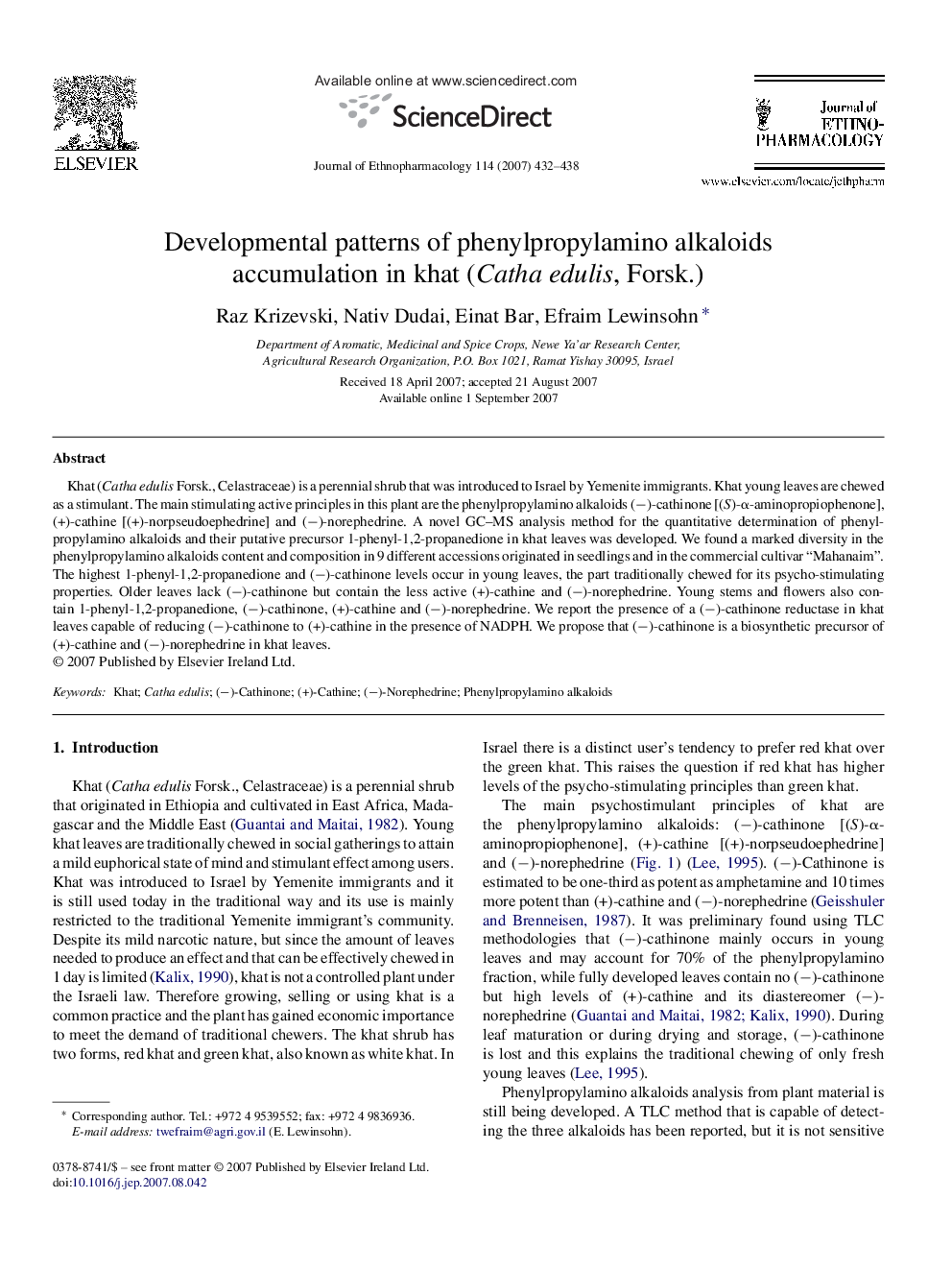| Article ID | Journal | Published Year | Pages | File Type |
|---|---|---|---|---|
| 2547807 | Journal of Ethnopharmacology | 2007 | 7 Pages |
Khat (Catha edulis Forsk., Celastraceae) is a perennial shrub that was introduced to Israel by Yemenite immigrants. Khat young leaves are chewed as a stimulant. The main stimulating active principles in this plant are the phenylpropylamino alkaloids (−)-cathinone [(S)-α-aminopropiophenone], (+)-cathine [(+)-norpseudoephedrine] and (−)-norephedrine. A novel GC–MS analysis method for the quantitative determination of phenylpropylamino alkaloids and their putative precursor 1-phenyl-1,2-propanedione in khat leaves was developed. We found a marked diversity in the phenylpropylamino alkaloids content and composition in 9 different accessions originated in seedlings and in the commercial cultivar “Mahanaim”. The highest 1-phenyl-1,2-propanedione and (−)-cathinone levels occur in young leaves, the part traditionally chewed for its psycho-stimulating properties. Older leaves lack (−)-cathinone but contain the less active (+)-cathine and (−)-norephedrine. Young stems and flowers also contain 1-phenyl-1,2-propanedione, (−)-cathinone, (+)-cathine and (−)-norephedrine. We report the presence of a (−)-cathinone reductase in khat leaves capable of reducing (−)-cathinone to (+)-cathine in the presence of NADPH. We propose that (−)-cathinone is a biosynthetic precursor of (+)-cathine and (−)-norephedrine in khat leaves.
